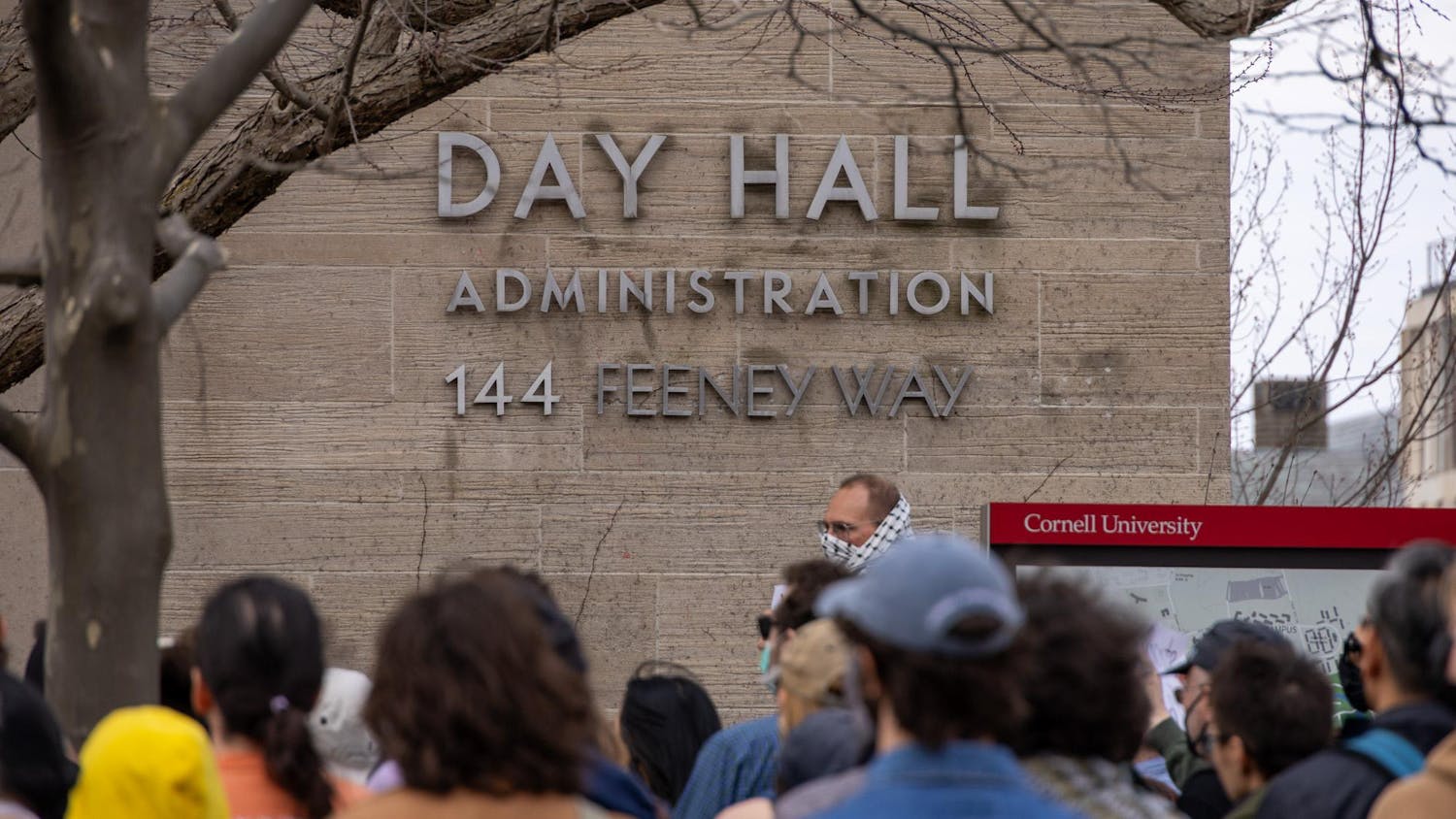Prof. Craig Womack, English, Emory University, sang a Creek hymn to audience members in Caldwell Hall on Friday, recounting stories from his role as a fiddler in traditional dances at Oklahoma’s indigenous Creek town Okmulgee.
In his lecture, Womack shared not only his work on fiddle dances, but also his efforts to preserve Creek culture. He explained that Creek hymns originated in the early 1800s, adapted from white Baptist and Methodist churches.
“Some of these Creek hymns are straight up translations of Protestant hymns, but others are composed by Creeks and have a very distinct Indian sound,” he said.
Creek traditions, including these hymns, have had to evolve and adapt to the modern world, according to Womack. He said that, traditionally, every spring Creek people hold stomp dances — gatherings on ‘stomping grounds’ to sing religious songs, followed by a social component. However, because only 12 stomping grounds are currently active, stompers have altered the practice in an effort to keep the tradition alive.
“When stomp grounds are closed in the fall, we hold indoor stomp dances where everything’s more social and there are less religious orders to follow,” Womack said.
While Creek culture was well maintained in the 1970s and 1980s through forums like popular American Indian baseball teams, archery competitions and fiddle dances, its reach has declined significantly today, according to Womack.
“Since then, indoor fiddle dances held every weekend have taken on a prominent role in preserving Creek culture,” Womack said.
Womack said every weekend, fiddle dances are held in the Council House in Oklahoma that has a special connection and meaning to Womack and his family.
“The Council House was built by my cousin’s great-grandfather in the 1870s,” Womack said. “He was the principal chief of the Creek Nation at that time.”
The most prominent issue affecting fiddle dances today is the predominance of older communities members in attendence, who have been exposed to the aspect of Creek culture since the 1950s, according to Womack. He said he has introduced a variety of new methods to attract younger attendees and preserve the fiddle dance legacy.
“We hold a Halloween dance and costume competition with a $100 prize, which usually has a big turnout and attracts younger people,” he said. “Young people keep informed about the dances on a Facebook page called Creek fiddle dance.”
Many people have demonstrated appreciation for Womack’s efforts to preserve the fiddle dance legacy, he said.
“People come up to me again and again and say that we must keep doing this because it’s an important part of Creek culture,” Womack shared.
Ashley Smith grad, who studies American Indian and Indigenous Studies, agreed, adding that both Womack’s academic and community work have been integral to her area of research.
“To see a new community project work in progress is really exciting and relevant to those of us studying in this field,” Smith said.

Lecturer Details Effort to Preserve Fiddle Dance, an Indigenous Creek Tradition
Reading time: about 3 minutes
Read More










